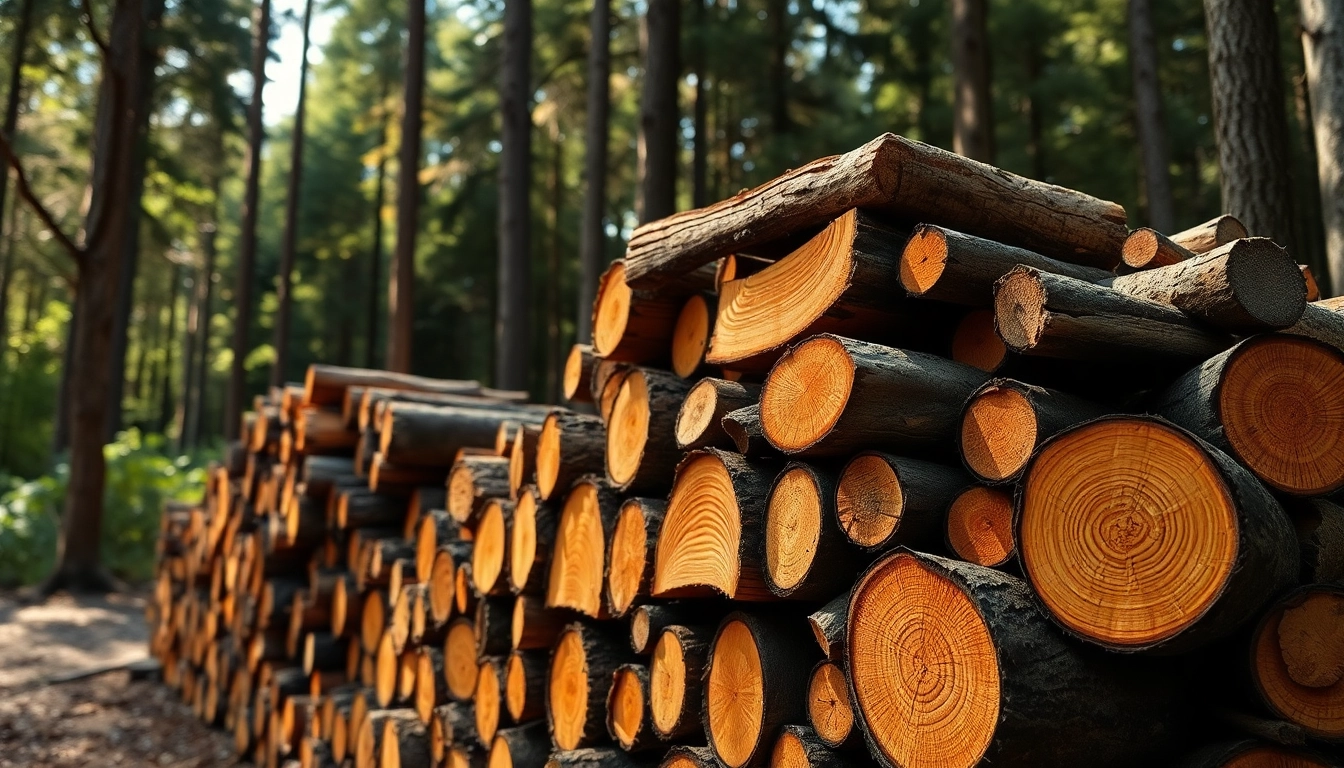
Essential Guide to Choosing and Storing Firewood for Optimal Heating
Understanding Firewood Types
Hardwood vs. Softwood: Key Differences
When selecting Firewood, understanding the differences between hardwood and softwood is crucial. These two categories not only affect the burning characteristics but also influence heat output, smoke production, and overall efficiency in a fireplace or wood stove.
Hardwoods, such as oak, maple, and hickory, are dense and slower to burn, providing a longer-lasting and hotter fire. They typically have higher energy content, making them ideal for extended heating needs. In contrast, softwoods like pine, spruce, and fir are lighter, ignite more quickly, and burn faster, which can be advantageous for quick fires or kindling in a grill or campfire setting. However, softwoods produce more creosote, which can lead to chimney buildup and increase the risk of chimney fires.
Best Firewood Choices for Heating
Choosing the right type of Firewood for heating depends on various factors, including availability, cost, and intended use. For optimal heating, hardwoods are often recommended due to their density and heat production. Some of the best choices include:
- Oak: Known for its excellent burning qualities and long-lasting heat.
- Maple: Burns cleanly and produces good heat.
- Birch: Fires ignite quickly and burn brightly, making it great for starting fires.
- Hickory: Offers a high heat output and a pleasant aroma, perfect for cooking.
While softwood can be used, especially for kindling or in situations where quick heat is needed, it is generally less efficient for prolonged heating. Therefore, a mix of hardwood for heat and softwood for kindling can create an ideal firewood strategy.
Identifying Firewood Quality
Not all Firewood is created equal. Identifying high-quality firewood involves looking for specific characteristics:
- Moisture Content: Ideally, firewood should have a moisture content below 20%. You can check this with a moisture meter or by observing the weight and sound (dry wood makes a hollow sound).
- Color and Bark: Quality firewood typically has a dry, cracked bark and a uniform color. Any signs of mold or excessive decay indicate poor quality.
- Size and Cut: Firewood should be cut to uniform lengths (typically 16 to 18 inches for stoves and fireplaces), ensuring it fits easily and burns evenly.
The Importance of Proper Firewood Storage
Choosing the Right Storage Location
Storing Firewood correctly is vital to maintaining its quality. The location should be dry and have good airflow. A sheltered spot away from direct rain and snow is ideal. Consider areas near your home that are easily accessible for winter use, yet away from moisture sources.
Best Practices for Firewood Stacking
How you stack your Firewood can affect its drying process and usability. Here are some best practices:
- Use a Rack: Elevating firewood off the ground prevents it from absorbing moisture.
- Stacking Method: Stack firewood in a crisscross manner to encourage airflow between pieces.
- Cover it: Use a tarp to cover the top of the stack while leaving the sides open to air, protecting it from rainfall and snow.
Avoiding Common Storage Mistakes
Common mistakes in firewood storage can compromise its quality. Here are pitfalls to avoid:
- Storing Inside: Avoid storing firewood inside your home where it can trap moisture and pests.
- Piling on the Ground: This can lead to mold growth and insect infestations.
- Neglecting Airflow: Ensure stacked wood is not tightly packed, which can restrict airflow and slow down drying.
How to Season Firewood Effectively
Understanding the Seasoning Process
Seasoned Firewood burns more efficiently, reducing smoke and increasing heat output. The seasoning process involves drying freshly cut wood over time to decrease the moisture content. Typically, this requires six months to a year, depending on the wood type, climate, and storage conditions.
Time Frames and Environmental Factors
The seasoning duration can significantly vary based on environmental factors. Warmer, dryer climates with good airflow will typically allow wood to season faster. On the other hand, damp and humid conditions extend the seasoning process. Here’s a general guideline based on firewood types:
- Softwoods: 6 months to a year.
- Hardwoods: 1 to 2 years, depending on the density.
Signs of Properly Seasoned Firewood
Knowing when your Firewood is adequately seasoned involves paying attention to specific signs:
- Color Change: Seasoned wood typically appears lighter in color.
- Crazing: Look for cracks in the wood surface, a standard sign of drying.
- Sound Test: Striking two pieces should produce a sharp sound, indicating dryness.
Using Firewood Sustainably
Harvesting Firewood Responsibly
Sustainable Firewood harvesting involves cutting only what you need and leaving enough trees to promote ecosystem health. Here are key principles to abide by:
- Permits: Always check local regulations regarding firewood harvesting, ensuring you comply with legal guidelines.
- Rotational Cutting: Implement a system where you only harvest from parts of the forest that can sustainably regrow.
- Focus on Deadwood: Using already fallen or dead trees is a responsible way to keep the forest ecosystem intact.
Benefits of Local Firewood Sourcing
Choosing local Firewood has numerous advantages. Locally sourced wood helps promote local economies and reduce transportation-related carbon emissions. It often comes from sustainable forestry practices, ensuring that you’re contributing to the health of the environment. Furthermore, you are more likely to procure seasoned wood due to shorter transportation times.
Environmental Considerations
While Firewood is a renewable resource, it’s essential to be mindful of the environmental impact. Overharvesting can lead to forest degradation, loss of wildlife habitat, and increased carbon emissions. Opting for sustainably harvested wood, minimizing waste, and selecting seasoned wood can mitigate these effects.
Enhancing Your Firewood Experience
Tools for Efficient Firewood Preparation
Preparing your Firewood can be made easier with the right tools. Essential tools include:
- Axe: For splitting logs into manageable sizes.
- Log Splitter: A mechanical option that can save time and effort.
- Wood Saw: Useful for cutting logs into smaller sections.
- Wood Cart: Helps transport firewood quickly to your storage or burning location.
Creating Ideal Conditions for Burning
For the best firewood experience, creating the right conditions when burning is crucial. Here are some practical tips:
- Airflow: Ensure adequate airflow to your fire to promote efficient burning. This often involves leaving doors or windows slightly ajar.
- Kindling: Use dry, well-seasoned kindling when starting your fire to improve ignition.
- Stir the Fire: Occasionally stir your fire and adjust logs to promote burning. This helps maintain a consistent heat output.
Maintenance Tips for Your Firewood Supply
Maintaining your Firewood supply is essential for efficiency and safety. Here are some maintenance tips:
- Regularly Inspect Storage: Check for signs of pest infestations or moisture build-up.
- Rotate Stock: Use older wood first to ensure nothing goes to waste.
- Seasoning Check: Be proactive in checking the development of your firewood, ensuring it remains well-maintained and seasoned before burning.
